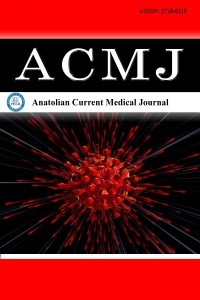1.
Libby P, Buring JE, Badimon L, et al. Atherosclerosis. Nat Rev Dis Primers. 2019;5(1):56. doi:10.1038/s41572-019-0106-z
2.
Ference BA, Ginsberg HN, Graham I, et al. Low-density lipoproteins cause atherosclerotic cardiovascular disease: evidence from genetic, epidemiologic, and clinical studies. Eur Heart J. 2017;38(32):2459-2472. doi:10.1093/eurheartj/ehx144
3.
He FJ, Tan M, Ma Y, MacGregor GA. Salt reduction to prevent hypertension and cardiovascular disease. J Am Coll Cardiol. 2020;75(6): 632-647. doi:10.1016/j.jacc.2019.11.055
4.
Ekinci EI, Clarke S, Thomas MC, et al. Dietary salt intake and mortality in patients with type 2 diabetes. Diabetes Care. 2011;34(3):703-709. doi: 10.2337/dc10-1723
5.
World Health Organization. WHO guideline: sodium intake for adults and children. Geneva: World Health Organization; 2012. Available from: https://iris.who.int/bitstream/handle/10665/77985/9789241504836_eng.pdf
6.
Grimes CA, Khokhar D, Bolton KA, et al. Salt-related knowledge, attitudes and behaviors (KABs) among Victorian adults following 22-months of a consumer awareness campaign. Nutrients. 2020;12(5): 1216. doi:10.3390/nu12051216
7.
Institute of Medicine. Dietary reference intakes for water, potassium, sodium, chloride, and sulfate. Washington, DC: National Academies Press; 2004. Available from: http://www.nap.edu/catalog/10925.html
8.
Ayaz A. Tuz tüketimi ve sağlık. Ankara: Sağlık Bakanlığı; 2010. Available from: http://www.beslenme.saglik.gov.tr/content/files/yayinlar
9.
USDA National Nutrient Database for Standard Reference, Release 17. Content of Selected Sodium, Na (mg) Foods per Common Measure, sorted alphabetically. Available from: www.nal.usda.gov/fnic/foodcomp/Data/SR17/wtrank/sr17a307.pdf
10.
Gennari FJ, Sessa A, Santucci A, et al. Sodium intake and hypertension. Nutrients. 2019;11(9):1970. doi:10.3390/nu11091970
11.
Wang YJ, Yeh TL, Shih MC, et al. Dietary sodium intake and risk of cardiovascular disease: a systematic review and dose-response meta-analysis. Nutrients. 2020;12(10):2934. doi:10.3390/nu12102934
12.
Afsar B, Elsurer Afsar R, Mowaffak S. The relationship between excess sodium intake and metabolic syndrome: worth consideration? Eur J Clin Invest. 2025;55(3):e70036. doi:10.1111/eci.70036
13.
Balan Y, Sundaramurthy R, Gaur A, et al. Impact of high-salt diet in health and diseases and its role in pursuit of cancer immunotherapy by modulating gut microbiome. J Family Med Prim Care. 2024;13(3):1628-1635. doi:10.4103/jfmpc.jfmpc_1574_23
14.
Chen J, Liu X, Huang H, Zhang F, Lu Y, Hu H. High salt diet may promote progression of breast tumor through eliciting immune response. Int Immunopharmacol. 2020;87:106816. doi:10.1016/j.intimp.2020.106816
15.
Carbone L, Johnson CJ, Huang Y. Sodium intake and osteoporosis. Findings from the women's health initiative. J Clin Endocrinol Metab. 2016;101(4):1414-1421. doi:10.1210/jc.2015-4017
16.
Kleinewietfeld M, Manzel A, Titze J, et al. Sodium chloride drives autoimmune disease by the induction of pathogenic TH17 cells. Nature. 2013;496(7446):518-522. doi:10.1038/nature11868
17.
World Health Organization. Salt Reduction. Geneva: World Health Organization; 2016. Accessed May 2019. Available from: https://www.who.int/news-room/fact-sheets/detail/salt-reduction
18.
Collaborators. Health effects of dietary risks in 195 countries, 1990-2017: a systematic analysis for the Global Burden of disease study 2017. Lancet. 2019;393(10184):1958-1972. doi:10.1016/S0140-6736(19)30041-8
19.
Erdem Y, Arici M, Altun B, et al. The relationship between hypertension and salt intake in Turkish population: SALTURK study. Blood Press. 2010;19(5):313-318. doi:10.3109/08037051003802541
20.
Higashi Y, Sanada M, Sasaki S, et al. Effect of estrogen replacement therapy on endothelial function in peripheral resistance arteries in normotensive and hypertensive postmenopausal women. Hypertension. 2001;37(2):651-657. doi:10.1161/01.hyp.37.2.651
21.
Bigazzi R. Clustering of cardiovascular risk factors in salt-sensitive patients with essential hypertension: role of insulin. Am J Hypertens. 1996;9(2):24-27. doi:10.1016/0895-7061(95)00268-5
22.
Malta D. High sodium intake increases blood pressure and risk of kidney disease: from the science of salt. J Clin Hypertens. 2018;20(12):1654. doi: 10.1111/jch.13408
23.
Graudal N. A radical sodium reduction policy is not supported by randomized controlled trials or observational studies: grading the evidence. Am J Hypertens. 2016;29(5):543-548. doi:10.1093/ajh/hpw006
24.
Jackson SL, King SM, Zhao L, Cogswell ME. Prevalence of excess sodium intake in the United States: NHANES 2009-2012. MMWR Morb Mortal Wkly Rep. 2016;64(52):1393-1397. doi:10.15585/mmwr.mm6452a1
25.
Ganguli MC, Grimm RH, Svendsen KH, et al. Higher education and income related to a better Na-K ratio in blacks: baseline results of the TOMHS study. Am J Hypertens. 1997;10(9):979-984. doi:10.1016/s0895-7061(97)00162-3
26.
Yi SS, Kansagra SM. Association of sodium intake with obesity, body-mass index, waist circumference and weight. Am J Prev Med. 2014;45(6): 53-55. doi:10.1016/j.amepre.2014.02.005
27.
Gelber RP, Gaziano M, Manson JE, Buring JE, Sesso HD. A prospective study of body mass index and the risk of developing hypertension in men. Am J Hypertens. 2007;20(4):370-377. doi:10.1016/j.amjhyper.2006.10.011
28.
Chen J, Gu D, Huang J, et al. Metabolic syndrome and salt sensitivity of blood pressure in non-diabetic people in China: a dietary intervention study. Lancet. 2009;373(9666):829-835. doi:10.1016/S0140-6736(09) 60144-6
29.
Yoon YS, Oh SW. Sodium density and obesity: the Korea National Health and Nutrition Examination Survey 2007-2010. Eur J Clin Nutr. 2013;67(2):141-146. doi:10.1038/ejcn.2012.204
30.
Zhou L, Stamler J, Chan Q, et al. Salt intake and prevalence of overweight/obesity in Japan, China, the United Kingdom, and the United States: the INTERMAP study. Am J Clin Nutr. 2019;110(1):34-40. doi:10.1093/ajcn/nqz067
31.
Haron H, Hiew I, Shahar S, et al. A survey on salt content labeling of the processed food available in Malaysia. Int J Environ Res Public Health. 2020;17(7):2469. doi:10.3390/ijerph17072469
32.
World Health Organization. Global health risks: mortality and burden of disease attributable to selected major risks. Geneva: World Health Organization; 2009.
33.
Bhat S, Marklund M, Henry ME, et al. A systematic review of the sources of dietary salt around the world. Adv Nutr. 2020;11(3):677-686. doi:10.1093/advances/nmz134
34.
U.S. Food and Drug Administration. Sodium in your diet. 2020. Available from: https://www.fda.gov/food/nutrition-education-resources-materials/sodium-your-diet. Accessed February 4, 2025.
35.
Akpolat T, Kadi R, Utaş C. Hypertension, salt, and bread. Am J Kidney Dis. 2009;53(6):1103-1110. doi:10.1053/j.ajkd.2009.03.005
36.
Erdem Y, Akpolat T, Derici Ü. Dietary sources of high sodium intake in Turkey: SALTURK II. Nutrients. 2017;9(9):933. doi:10.3390/nu9090933

